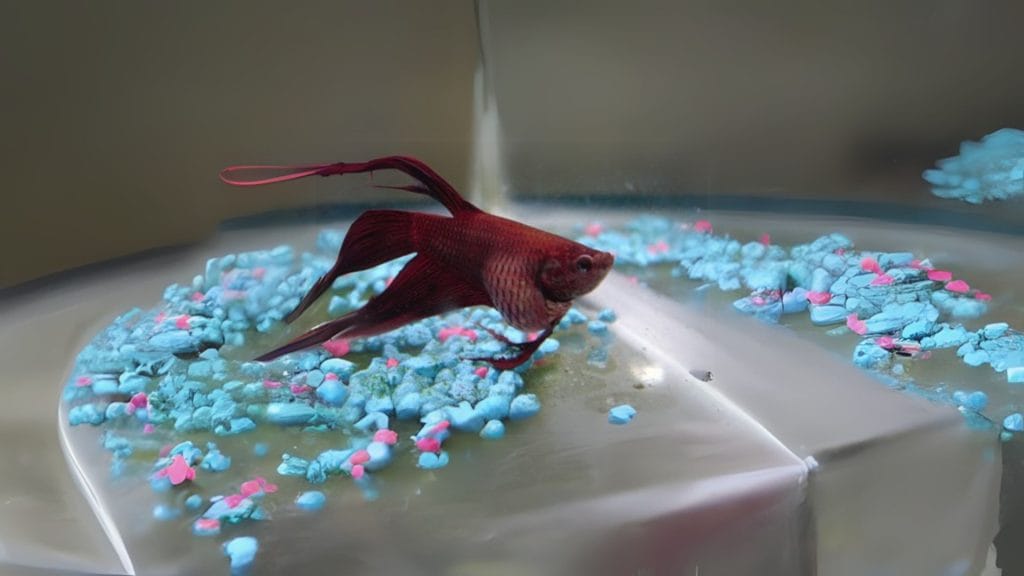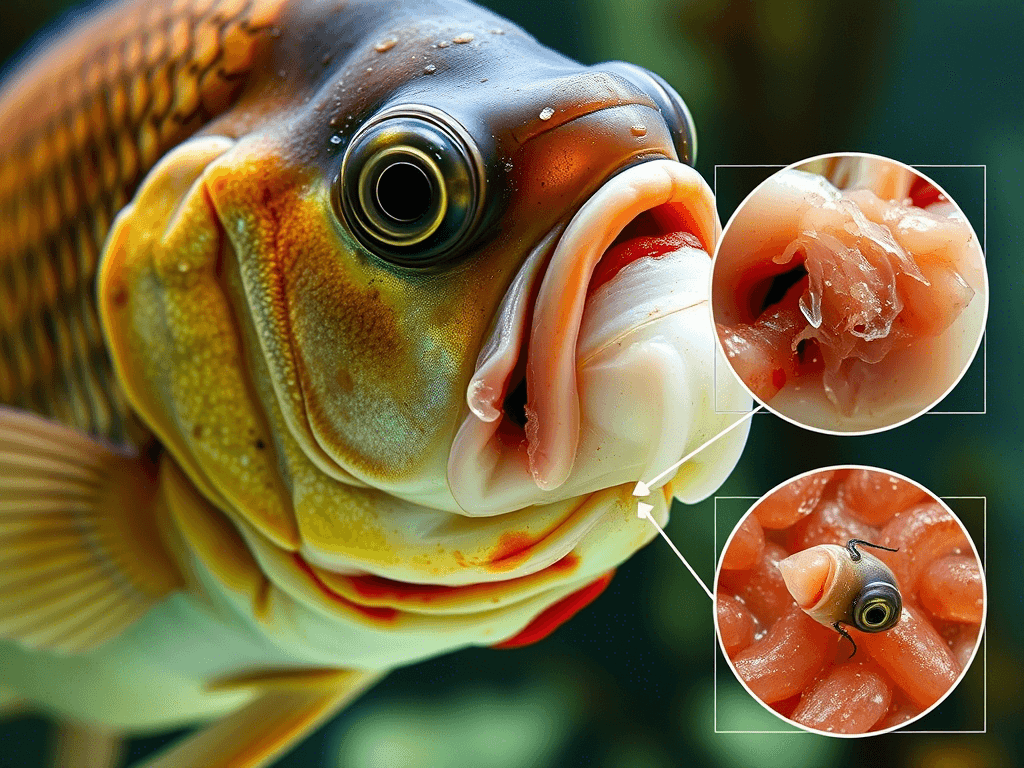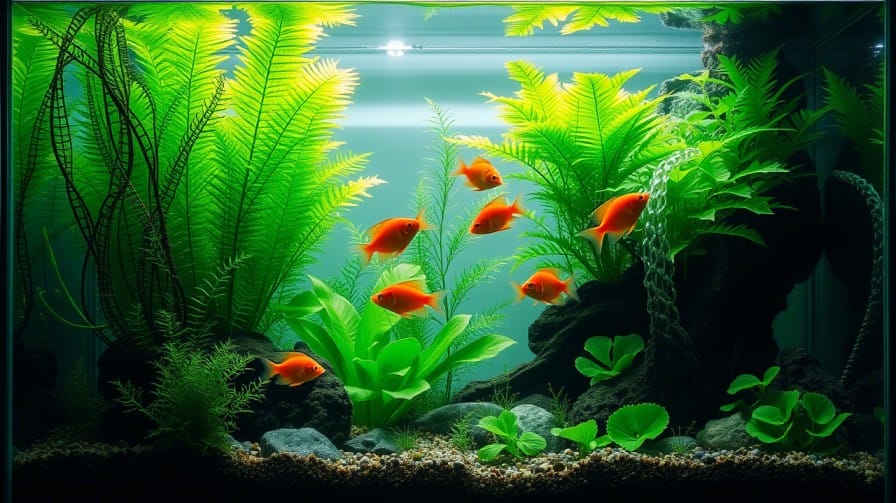Fish diseases remain one of the most challenging aspects of aquarium keeping. Whether you’re a beginner or experienced hobbyist, understanding how to identify, treat, and prevent common fish ailments is essential for maintaining a healthy aquatic environment. This comprehensive guide provides everything you need to know about recognizing symptoms, implementing effective treatments, and establishing preventative measures to ensure your aquarium inhabitants thrive.
Understanding Fish Disease: The Basics
Aquarium fish diseases typically stem from three primary sources: parasitic infections, bacterial infections, and fungal infections. Environmental factors such as poor water quality, inadequate nutrition, and stress can significantly weaken your fish’s immune system, making them more susceptible to these pathogens.
The key to effective treatment begins with early detection. Regular observation of your fish’s behavior, appearance, and eating habits can help you identify potential health issues before they become severe or spread throughout your aquarium.
Common Aquarium Fish Diseases: Symptoms and Treatments
White Spot Disease (Ich)

Symptoms: Ich presents as small white dots resembling salt grains on the fish’s body, fins, and gills. Affected fish may exhibit increased gill movement, scratching against objects (flashing), lethargy, and loss of appetite.
Treatment:
- Raise aquarium temperature to 86°F (30°C) gradually over 48 hours to speed up the parasite’s lifecycle
- Administer ich-specific medications containing malachite green or formalin according to manufacturer instructions
- Continue treatment for at least 7-10 days after the last visible spots disappear
- Perform partial water changes of 25-30% every 2-3 days during treatment
Prevention: Quarantine new fish for 2-4 weeks before introducing them to your main tank. Maintain stable water parameters and avoid sudden temperature fluctuations.
According to research from the University of Florida Fisheries and Aquatic Sciences, ich parasites cannot survive without a host for more than 48 hours at temperatures above 75°F.
Fin Rot & Tail Rot

Symptoms: Fins and tail appear ragged, discolored, or frayed at the edges. In advanced cases, fin tissue may deteriorate to the point where it reaches the fish’s body.
Treatment:
- Improve water quality through partial water changes of 30-50%
- Test water parameters and address any issues with ammonia, nitrite, or nitrate levels
- Administer broad-spectrum antibacterial medications containing erythromycin or nitrofurazone
- For severe cases, veterinary-prescribed antibiotics may be necessary
Prevention: Maintain excellent water quality with regular testing and water changes. Avoid overcrowding and provide adequate filtration.
Columnaris (Cotton Mouth Disease)

Symptoms: White or grayish patches on the mouth, fins, or body that resemble cotton or fungus. Unlike true fungal infections, these patches may have a yellowish tinge and can spread rapidly.
Treatment:
- Immediate partial water change of 50%
- Lower tank temperature to 75°F (24°C) as the bacterium thrives in warmer water
- Administer antibiotics specifically designed for gram-negative bacteria
- Add aquarium salt at a rate of 1 tablespoon per 5 gallons if treating soft water species
Prevention: Maintain low stress environment with stable water parameters. The Journal of Fish Diseases reports that Columnaris bacteria are particularly prevalent in environments with high organic waste.
Dropsy

Symptoms: Pine cone-like appearance of scales that stick out from the body, swollen abdomen, bulging eyes, lethargy, and loss of appetite.
Treatment:
- Isolate affected fish immediately to prevent potential spread
- Prepare a hospital tank with pristine water conditions
- Add Epsom salt (magnesium sulfate) at a rate of 1 teaspoon per 5 gallons to reduce swelling
- Administer broad-spectrum antibiotics as directed
Prevention: Dropsy is typically a symptom of systemic bacterial infection rather than a disease itself. Maintain excellent water quality and provide a nutritionally balanced diet to support immune function.
Fish Tuberculosis (Mycobacteriosis)

Symptoms: Loss of scales, skin lesions, spinal deformities, emaciation despite normal feeding, and abnormal swimming behavior.
Treatment:
- This disease is difficult to treat and often fatal. In most cases, humane euthanasia is recommended for affected specimens
- If treatment is attempted, long-term antibiotic therapy under veterinary guidance is required
Prevention: Maintain scrupulous tank hygiene and quarantine all new fish. According to the World Organisation for Animal Health, mycobacteriosis can be zoonotic, meaning it can potentially affect humans through open wounds. Always wear gloves when handling potentially infected fish or aquarium water.
Swim Bladder Disorder

Symptoms: Difficulty swimming upright, floating at the surface, sinking to the bottom, or swimming sideways.
Treatment:
- Fast the fish for 24-48 hours, then feed lightly with high-fiber foods like cooked peas (shell removed)
- For chronic cases, create a stress-free environment with minimal water flow
- Some fish may benefit from a short bath in Epsom salt solution (1 tablespoon per gallon) for 10-15 minutes
Prevention: Avoid overfeeding, particularly with dry floating foods that expand in the fish’s stomach. Feed small portions multiple times throughout the day rather than one large feeding.
Gill Flukes & Skin Flukes

Symptoms: Increased gill movement, gasping at the surface, excessive mucus production, scratching against objects, and darkened coloration.
Treatment:
- Administer antiparasitic medications containing praziquantel or flubendazole
- Continue treatment for at least 2-3 weeks to break the parasite’s lifecycle
- Perform regular water changes during treatment to remove free-swimming parasites
Prevention: Quarantine new plants and fish before introducing them to your main aquarium. Research from the Cornell University College of Veterinary Medicine suggests that many parasitic infections originate from introducing new, untreated specimens.
Velvet Disease (Gold Dust Disease)

Symptoms: A fine gold or rust-colored dust-like coating on the fish’s body, increased gill movement, scratching against objects, and loss of appetite.
Treatment:
- Dim aquarium lights as the parasite (Piscinoodinium) contains chlorophyll and needs light to survive
- Raise temperature gradually to 82°F (28°C)
- Administer copper-based medications following manufacturer instructions precisely
- Continue treatment for 10-14 days
Prevention: Maintain stable water parameters and quarantine new fish for at least two weeks before introducing them to your main aquarium.
Advanced Fish Disease Diagnosis
Using a Microscope for Parasite Identification
For hobbyists seeking a more definitive diagnosis, basic microscopy can be invaluable. A skin scrape or gill clipping examined under 40-100x magnification can reveal the presence of parasites like Ich, flukes, or Trichodina.
When to Consult a Fish Veterinarian
While many common fish ailments can be treated at home, certain situations warrant professional intervention:
- Multiple fish showing symptoms despite water quality improvements
- Unusual symptoms not matching common diseases
- High-value specimen fish exhibiting serious health issues
- Recurring disease outbreaks despite treatment
The American Association of Fish Veterinarians can help locate a qualified aquatic veterinarian in your area.
Preventative Measures: The Key to Fish Health
Water Quality Management
The foundation of disease prevention is maintaining optimal water parameters:
- Test water weekly for ammonia, nitrite, nitrate, pH, and hardness
- Perform regular partial water changes of 20-30% every 1-2 weeks
- Clean filter media in removed tank water, never tap water
- Monitor temperature stability and avoid sudden fluctuations
Quarantine Protocols
Establish a dedicated quarantine system:
- Minimum 10-gallon tank with simple filtration and hiding places
- Isolate new fish for 2-4 weeks before introducing to main aquarium
- Observe for any signs of disease during quarantine period
- Consider prophylactic treatment for common parasites during quarantine
Nutrition and Feeding
Proper nutrition significantly impacts immune function:
- Provide varied diet including high-quality dry foods, frozen foods, and occasional live foods
- Include foods containing immune-boosting ingredients such as garlic, vitamin C, and omega-3 fatty acids
- Feed small portions 2-3 times daily rather than one large feeding
- Remove uneaten food after 2-3 minutes to prevent water quality issues
According to research published in the Journal of Fish Biology, fish fed a varied diet containing high levels of carotenoids showed significantly improved disease resistance.
Stress Reduction
Stress is a primary contributor to disease susceptibility:
- Provide appropriate tankmates and avoid mixing incompatible species
- Create adequate hiding places using plants, rocks, and driftwood
- Maintain proper stocking levels to prevent overcrowding
- Minimize disturbances around the aquarium
Medication Guide: Using Fish Treatments Effectively
Types of Medications
Understanding the various treatment options available is essential:
- Antibiotics: Effective against bacterial infections but not parasites or fungi
- Common examples: erythromycin, nitrofurazone, tetracycline
- Usage: Best for confirmed bacterial infections
- Antiparasitics: Target specific parasites without affecting beneficial bacteria
- Common examples: praziquantel, fenbendazole, metronidazole
- Usage: Effective against internal and external parasites
- Antifungals: Specifically designed to combat fungal infections
- Common examples: malachite green, methylene blue
- Usage: For confirmed fungal infections or as preventative for injuries
Proper Medication Administration
Incorrect medication usage can be ineffective or even harmful:
- Remove activated carbon and other chemical filtration during treatment
- Calculate dosage based on actual water volume (subtract substrate and decor volume)
- Follow manufacturer’s instructions precisely regarding dosage and duration
- Document treatment protocols including dates, dosages, and observed results
Medication Side Effects and Risks
Be aware of potential drawbacks to medication use:
- Many treatments can harm beneficial bacteria, compromising biological filtration
- Some medications can stain aquarium silicone and plastic components
- Certain species (scaleless fish, invertebrates) may be sensitive to standard dosages
- Repeated use of antibiotics can lead to resistant bacterial strains
Special Considerations for Different Aquarium Types
Freshwater vs. Saltwater Disease Management
While many diseases affect both freshwater and marine fish, treatment approaches may differ:
Freshwater Systems:
- Generally more tolerant of medication treatments
- Salt can be used as a supportive treatment for many conditions
- Disease spread tends to be more rapid due to lower water stability
Saltwater Systems:
- More sensitive to medication; often require reduced dosages
- Copper treatments can be harmful to invertebrates and corals
- Quarantine is especially critical due to treatment limitations in main tank
Plant-Focused Aquariums
Many disease treatments can harm aquatic plants:
- Consider removing affected fish to a hospital tank for treatment
- If in-tank treatment is necessary, research plant compatibility with medications
- Heavily planted tanks may require lower dosages due to medication absorption by plant matter
Community vs. Species-Specific Tanks
Treatment approaches may vary based on tank inhabitants:
- Community tanks require broad treatments safe for all species present
- Species-specific tanks allow for more targeted treatment protocols
- Consider species sensitivity when selecting medications (scaleless fish, loaches, etc.)
Recovery and Rehabilitation
Post-Treatment Care
After successful disease treatment:
- Gradually return water parameters to normal through partial water changes
- Monitor treated fish closely for signs of relapse
- Provide high-quality nutrition to support immune recovery
- Consider adding beneficial bacteria supplements to restore biological filtration
Long-Term Monitoring
Establish ongoing health assessment protocols:
- Regular observation of all fish during feeding times
- Weekly water quality testing to maintain optimal parameters
- Prompt isolation of any fish showing concerning symptoms
- Seasonal preventative measures during typical disease outbreak periods
Conclusion
Maintaining fish health requires vigilance, knowledge, and prompt action. By understanding common diseases, implementing effective quarantine procedures, and maintaining optimal water quality, you can significantly reduce disease outbreaks in your aquarium. Remember that prevention is always preferable to treatment, but having the knowledge to identify and address health issues quickly can make the difference between losing and saving your aquatic pets.
For persistent or complicated health issues, don’t hesitate to consult with experienced hobbyists or professional aquatic veterinarians. By approaching fish health management systematically and proactively, you’ll create an environment where your aquarium inhabitants can thrive for years to come.



